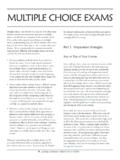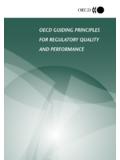Transcription of ImprovingPatientFlowintheNHS - Care by Design
1 Improvi ng PatientFlowin th e NHSC asestudiesonreducingdelaysmonitorpatient pathwaysefficiencyvaluestreammappingrela tionshipswholejourneydataanalysisNNOO DDEELLAAYYSS negotiationcommissioningsustainstrategic planningwhole systempage03 ContentsApplyin g Service Improvement Methodologies to Reduce Waiting in RadiographyBolton Abdominal Pain -Use of Problem Solving TechniquesBolton Hospital - Using Lean to Achieve 18 Weeks in OrthopaedicsBolton Im proving Care SystemBreach Analysis and Pathway RedesignCastle Hil l EndoscopyChoice Appointments in PhysiotherapyCommiss ioning for Patient PathwaysConfiguri ng Audiology Servi ces to Deliv er High Qual ity and Meet 18 Weeks Continuo us Perineural Analgesia for Fast Tracki ng Total Knee Ar throplastyEngagin g Staff t o Achieve 18 Weeks at Bradfor d Teachi ng Hospitals (NHS)
2 Foundation TrustEnhanced Recovery ProgrammeHereford PathologyHull Cardiology - F inance VersionImproving the Tr ansfer Processes at t he End of Heart Surgery 01 02 03 04 05 06 07 08 09 10 11 12 13 14 15page05-06page07-10page11-12page13-16pa ge17-20page21-22page23-26page27-30page31 -34page35-36page37-40page41-45page46-48p age49-52page53-56 ContentsLean Green Stream in SurgeryLean in Healthcare Therapies ServicesLeeds Primary Care Trust Uploading of Community Patient Activity DataLincolnshire Hip and Knee Pathway Review of WholePathway to Achieve 18 WeeksMaking the Difference Real in GynaecologyManaging Variation in Patient DischargeMatching Demand and Capacity in CardiologyNew Ways of Working to Increase Radiology CapacityOperating Theatre Capacity ModelPeterborough Cataract ServiceRedesigning Nursing Roles to Improve Patient FlowRedesigning the Vascular Surgery One Stop Clinic at Good HopeReducing ENT Follow UpsUnderstanding Theatre Utilisation in OphthalmologyUsing 5s (6s) to Create a Work Flow Around the Pharmacy Aseptic Unit Distribution Area 16 17 18 19 20 21 22 23 24 25 26 27 28 29 30page57-62page63-64page65-68page69-72pa ge73-74page75-78page79-82page83-86page87 -90page91-92page93-94page95-98page99-102 page103-104page105-107page05 Applying Servic e Improvement Methodologies to Reduce Waiting in RadiographyWhat is it about?
3 Through applyi ng the improvement principl es of capacity and demand management to a radiologydepartment, waits f or barium enemas and computeri sed tomography (CT) were reduced will it help achieve 18 weeks?By reducing bottl enecks in the diagnostic part of t he was the problem?The problem was identified in the hospital 's r adiol ogy servi ce in the diagnostic stage of the patientjourney. This was contributing to a 19 week wait f or a barium enema, causing long waiting lists todevelop. There was a similar problem i n the ser vi ce with delay and long waiting lists for CT they did to identify the cause of the problemThe hospital Tr ust j oi ned the Improvement Partnership for Hospital s programme in April 2003. As part of t he organisation s wider programme t o i mprove emer gency, orthopaedic and outpatient care, theimprovement t eam f ocused on radiology improvement.
4 Alongside the portfolio of work, tackling issues in these key work streams, their effor ts were supported by organisational development, a better use and underst anding of operat ional l ogist ics inf or mat ion and changes in the way the Trust wasmanaged. The overarching goal was to transfor m the whole care servi ce improvement t eam t ar geted waits f rom t he beginning, using process mapping exercises toreveal variat ion between demand and capacity i n radiol ogy they did to improve serviceProcess mapping exercises across t he Trust i dentified several areas in the system that needed to beaddressed in order t o reduce the wait f or a barium enema: el iminating carve out . Weekly slot s had previously been divi ded between routine, inpatient and ur gent requests without regard for demand covering all sessi ons, r at her t han having unfilled slot s trai ni ng radiographers to perfor m barium enemas to address the shortage in radiologists int roducing flexibi lity int roducing protocols f or checking requests t o avoid delay gi vi ng indivi dual appoint ment t imes r at her t han group booking times only booking barium examinations onto l ists, r at her than many diff erent examinations int roducing measures and tar gets where there had previously been a similar process of i mprovement, t he Trust has improved access to CT scans.
5 It has also usedthe met hodology to reduce the strain on the radiol ogy department i n the demand for viewing filmsthat had not been carried out by clini ci ans. 01pa ge04 What i s it l ike now?A reduc tion in wait in g times in the diagnostic stage of a patient s journey (barium enema) from 19weeks to 2 w eeks over a 5 month period was achiev ed by applying principles of capacity and demandmanagement. Waiting times for sc anning have been reduc ed from six weeks to three , r educing waiting lis ts has not completed the work of the service improvement team on theradiology w ork str eam. The team ar e now d eveloping s taff roles, from radio graphers to clerks, andredesigning the administr at ive sys tem t o support improvements. These improvements are beingmon itored con tinuously t o identify their i mpact on the rest of the hospital to ensure that they arebeing sustained, and t o find ways of boosting them f pointsAdopting the principles of c apacity and demand management addressed a number of differentproblems in on e department.
6 The team were part of a strategic programme ac ross the Trust to improv e the whole care syst em, givi ng validity and supp ort to thei r for i mp lementationAdditional resources:VariationDisc harge PlanningProcess MappingRole RedesignOverview of Patient FlowComprehensive Guide to Demand and CapacityQuick Introduction to Demand and CapacityManaging Bo ttlenecksAc knowledgements / so urc esGwynn eth KirkpatrickService Impro vement ManagerEaling Hospitals NHS Trus tgwyn Abdominal Pain - Use of Problem Solving TechniquesWhat is it about?Dur ing a value stream analysi s event (VSA), the team did a root cause analysis of potential obstacles tothe impl ementat ion of t he fut ure stat e process f or patients with abdominal pain using 5 whys and 5hows' met will it help achieve 18 weeks?
7 Reducing unnecessar y admissi ons f or abdominal pain, as well as rework i n following up those who arebrought back for di agnostics and review in outpatients, will create more capacity to reduce delay forot her was the problem?Following the Trust value stream analys is event i n Oct ober 2006, the abdominal pain value stream wasidentified as a prior ity. At Bolton Hospital , management of abdominal pain wasn't standardised; therewas a perception that the patient journey was delayed by a lack of access to diagnostics and clinicaldecision making at appropriat e points i n the pathway. It was al so believed that some admissions couldbe avoided and that t here was a lot of rework i n fol lowing up patients who were brought back fordi agnostics and review. The process f or cl ini cal coding may also have been impacting on incomest reams and clinical data t racking.
8 This value stream analysi s was conducted in February they did to identify the cause of the problemA team of m ore than 25 staff f rom diff erent departments and disci pl ines conducted the value streamanalys is. The scope included all adult patients with abdominal pain presenting as an emergency toBolton Hospital A & E department or asses sment units, up to the point of discharge from current st ate map showed that patients were repeatedly moving wards and visiting departmentsfor diagnostic procedures, causing unnecessary movement and delays. The team decided one of theheadlines should be 'Doctor s Walk Mil es and Lose their Patients and their Patience', with anotherheadline being No Beds at the Inn .Weekends were highlighted as a cause of delayed patient flow time r anged from days.
9 There were 121 inf or mat ion handoffs and patientstravelled 2300 met they did to improve serviceAf ter considering the ideal s tat e, the team decided the key elements f or inclusion in the future st at e were: prompt pain relief si ngle entry point immediat e diagnostics (t ests and diagnostici ans) si mpl e electronic patient team al so did a root cause analysi s of potential obstacles to the implementation of the future stateusing 5 whys and 5 hows met hodology (see photograph 1). 02pa ge06page09 Coloured post-it notes w ere used to highlight: pr ob lems gr een why they w ere problems yellow ho w the pro blems would be resolved tograph 1. R oo t cause analysi s using fi sh bone techniqueThe tea m then i den tified the t op 10 requirements to make the future state a reali ty: ef fective leadership clear communication standard w orking p racti ces seven day week for all services qu ick, ef fective discharges patients: right p lace, first time, stay there best multi-dis ciplinary t eam work qu ick, ef fective diagnosis easily accessible diagnost ic equipment ac cessible user friendly patient r ec i s it l ike now?
10 The team identified many overall b enefits to be gained by implementation of the future statein cluding: reduced infection ri sk, morbi dit y and mortality and associated costs as a result of less d elays and patient movement less staff time spent c hasing and replic ati ng requests for diagnostic tests or diagnosticians and managing p atients t hrough the exis ti ng complicated processes less inappro priate admi ss ions due to delays in diagnosis reduced length of s tay and associated c team then cr eated a model based on the introduc tion of ultrasound scanning in the immediateassessment ph ase. The estim ated savings in associated c os ts of beds was steps Pl anning and impl ementati on events t o achieve specifics of t he fut ure state for the abdominal pain val ue stream.





